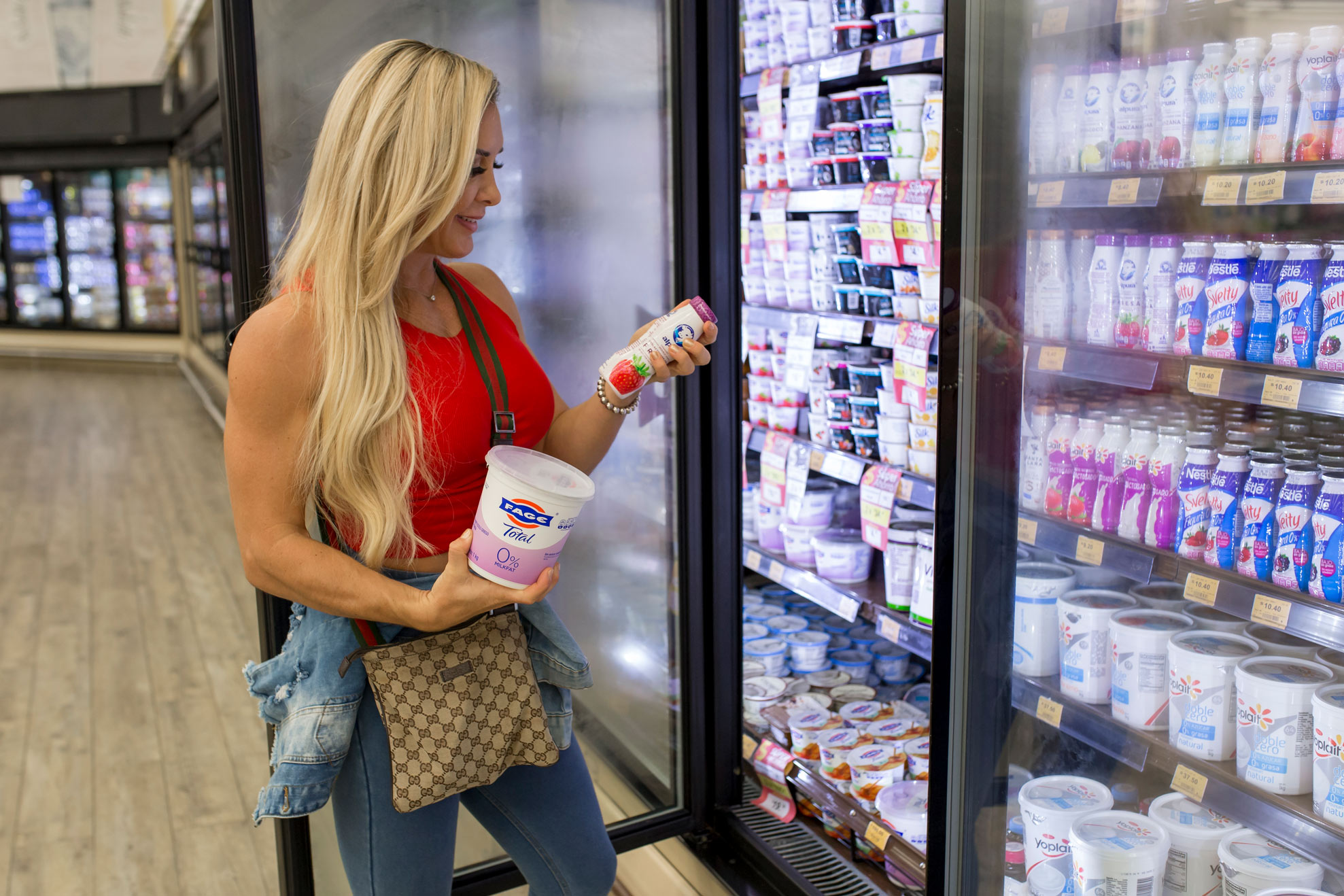GET SUPERMARKET SAVVY
Good nutrition starts with smart choices in the grocery store. Cooking up healthy meals is a challenge if you don’t have the right ingredients in your kitchen. But who has time to read all the food labels and figure out which items are the most nutritious and the best buys? With a little guidance, healthy choices are simple to find in any supermarket.
Plan Ahead for Success
The process starts even before you head to the grocery store, experts say. Before you set out for the market, plan your meals for the week, and create a list to shop from. It takes a few minutes, but saves time in running back to the store for missing ingredients. And never shop hungry! This is a disaster waiting to happen!
Your HIT LIST should contain the following items each week:
- Produce: Spend the most time in the produce section, the first area you encounter in most grocery stores (and usually the largest). Choose a rainbow of colorful fruits and vegetables. The colors reflect the different vitamin, mineral, and phytonutrient content of each fruit or vegetable. No fruit or vegetable is off limits. The sugar content of the fruit will determine the timing and portion you can enjoy.
- Carbohydrates: Choose the least processed foods that are made from whole grains. For example, regular oatmeal is preferable to instant oatmeal. But even instant oatmeal is a whole grain and a good choice. When choosing whole-grain cereals, aim for at least 4 grams of fiber per serving, and the less sugar the better. Keep in mind that 1 level teaspoon of sugar equals 4 grams and let this guide your selections. Avoid granolas, even the low-fat variety; they tend to have more fat and sugar than other cereals. I recommend avoiding bread and pastas as much as possible and if you do consume them always choose whole-wheat bread and pastas. Pick brown or black or basmati rice, sweet potatoes or yams, grain mixes, quinoa, bulgur, and barley.
- Proteins: Meat, Fish, and Poultry. Choose lean cuts of meat (like round, top sirloin, and tenderloin), skinless poultry. Always choose fresh over farmed fish and consume wild Salmon 1-2x/week because it’s a good source of omega-3 fatty acids.
- Dairy. Dairy foods are an excellent source of bone-building calcium and vitamin D. There are plenty of low-fat and nonfat options. My favorite is 0%, plain greek yogurt.
- Frozen Foods. Frozen fruits and vegetables (without sauce) are a convenient way to help fill in the produce gap if you don’t have fresh vegetables on hand.
- Sodium-Free Herbs and Spices. I love Mrs. Dash, cinnamon and fresh herbs to add flavor to my foods. I also use salt but I add it myself so I can control the amount of sodium in my food.
- Superfoods. Matcha, Spirulina and Acai are some of my favorites. Add these convenient powders to any of your foods to increase nutritional value and micronutrients.
- Oils, Canned and Dried Foods. Keep a variety of canned vegetables, fruits, and beans on hand to toss into soups, salads, pasta, or rice dishes. Whenever possible, choose vegetables without added salt and fruit packed in juice. Tuna packed in water, low-fat soups, nut butters, organic extra-virgin cold-pressed olive oil and coconut oils and assorted vinegars should be in every healthy pantry.
- Sauces. I always have reduced-sugar sauces on hand like ketchup, jams and maple syrup.
- Stevia. The only sweetener I use and approve. This can be added to any foods to increase sweetness.
The ‘Shop like a Pro’ Market experience is part of my RyallFitnessGetaway Experience. Click here to Learn more about my 4 Day Fitness Intensives





